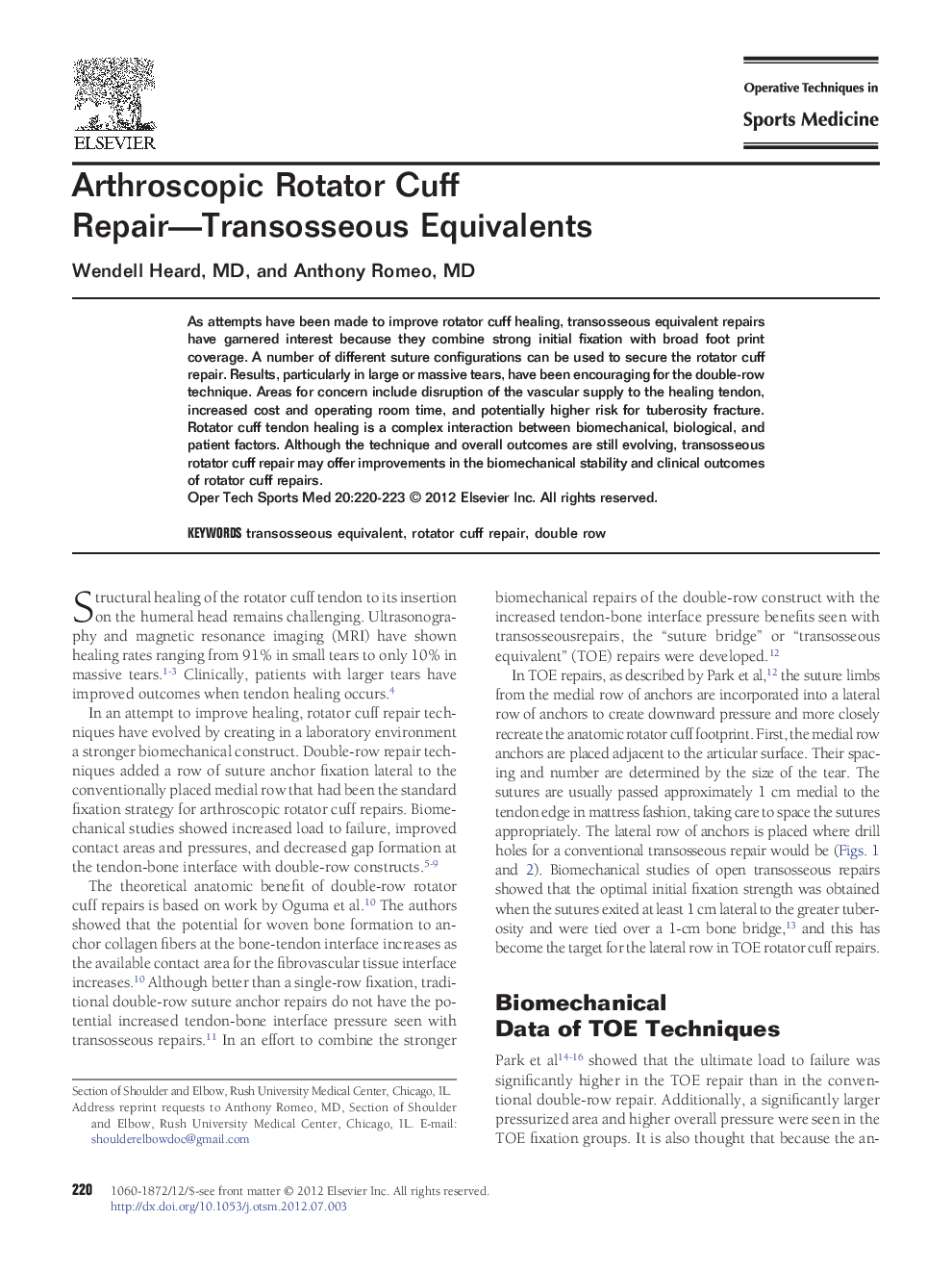| Article ID | Journal | Published Year | Pages | File Type |
|---|---|---|---|---|
| 4079662 | Operative Techniques in Sports Medicine | 2012 | 4 Pages |
As attempts have been made to improve rotator cuff healing, transosseous equivalent repairs have garnered interest because they combine strong initial fixation with broad foot print coverage. A number of different suture configurations can be used to secure the rotator cuff repair. Results, particularly in large or massive tears, have been encouraging for the double-row technique. Areas for concern include disruption of the vascular supply to the healing tendon, increased cost and operating room time, and potentially higher risk for tuberosity fracture. Rotator cuff tendon healing is a complex interaction between biomechanical, biological, and patient factors. Although the technique and overall outcomes are still evolving, transosseous rotator cuff repair may offer improvements in the biomechanical stability and clinical outcomes of rotator cuff repairs.
